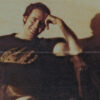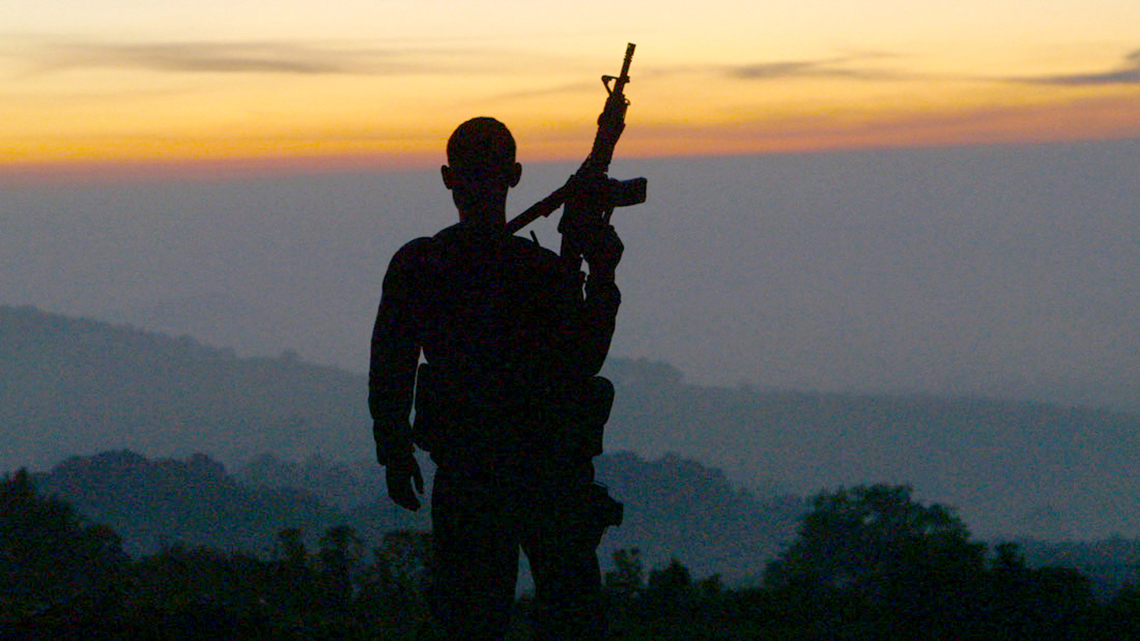As Matthew Heineman has learned over the last few years, if he’s looking to cover a war, he doesn’t need to look much further than the borders of his own country. After detailing the fight of Americans to find affordable health care in “Escape Fire,” with co-director Susan Froemke, the filmmaker dodges real bullets in his latest “Cartel Land,” a clear-eyed look inside the frontline of the drug war as it unfolds at the edge of Arizona on the U.S./Mexico border.
Heineman had originally set out to tell the story of Tim “Nailer” Foley, the leader of a vigilante group known as Arizona Border Recon that he read about in Rolling Stone. Intrigued with the men who took it upon themselves to patrol a border they saw as porous, he spent five months with the group as they rounded up illegal immigrants crossing over. Yet it wasn’t long before he was tipped off by his father to Autodefensas, another group of self-appointed paramilitary just on the other side of the fence in Michoacan, In a city besieged by drug cartels, namely the Knights of Templar, which strikes fear into local citizenry with casually conducted beheadings and retribution to farms that won’t help with their illicit activities, a revolution is led by Dr. Jose Manuel Mireles, who with his sandy gray mustache and tall physique looks every bit the part of a local sheriff here to clean up the town quite nicely. However, it is the surgical precision learned during his day job that serves Mireles best in helping citizens reclaim their communities town by town, giving them arms to protect themselves not only from the cartels but the local authorities that have been susceptible to corruption.
While Heineman’s willingness to set aside his personal well-being to follow Autodefensas into the breach is what’s been lauded since “Cartel Land” debuted at Sundance earlier this year, it wouldn’t mean much if he hadn’t found two such fascinating characters to track, as neither Foley nor Mireles are quite who they appear to be at first. By focusing on their individual pursuits of law and order, “Cartel Land” is able to show the the effects of a futile drug war that leaves no one untouched, including the filmmaker who recently took the time to talk about why he threw caution to the wind, how he was led into the desert for some methmaking and never knowing where the story would take him.

This film is wildly different film than “Escape Fire,” which is about healthcare in the U.S. and I really was fascinated by this world of everyday citizens taking the law into their own hands, so I set about finding the characters and getting access to them. I had this heart for these two vigilante movements — one in Arizona, one in Mexico — both who are fighting this shared enemy, the Mexican drug cartels. I was embedded with both of these groups for over a year and the story evolved in a way that I never could have predicted or dreamed of.
That’s what makes a documentary filmmaking exciting because you follow the story and you let the story tell you where to go. A mentor of mine once said, “If you end up with the story you started with, then you weren’t listening along the way.” That very much helped me with “Cartel Land,” especially in Mexico. Originally, I thought I was telling a very simple hero-villain story, sort of in the vein of a classic western. Then over time, the lines between good and evil became much more blurry, much more complex. That complexity fascinated me. I became obsessed with trying to understand what was really happening.
It also was an incredibly complex film to make — mentally, emotionally — and you really didn’t know what was going to happen next. I was constantly chasing this moving target. By the end, I could be on an operativa — on a mission — and really not know whether I was with the good guys or the bad guys and that was a really scary thing.
Were you actually a bit of a security risk for the men involved in the shootouts, following them with your camera?
A lot of the more intense scenes, I was there alone during the shootouts and scenes like that and it was almost like every man for themselves. I was there looking out for my own back and taking care of myself and they were doing the same. They had a lot of other things to worry about other than me being there. That trust wasn’t gained overnight and those scenes didn’t just happen. It was months and months of being embedded with them, spending time with them, developing characters, developing story lines, and developing relationships that allowed me to into the dark, interesting corners that I got into.

Meth is really important to the story. Most of the meth that we consume in the U.S. comes from Mexico — a lot of that from Michoacán — and so I really wanted to get in there, get into the meth lab, [which] is the life blood of the cartel. It’s their cash cow, so it was really important to get. Every shoot I would ask people, “Do you know somebody?” I kept getting teased and teased, and invested months in trying to get in there. It wasn’t until our last shoot that I got a call, and it was one of those days where nothing was going right. Basically, nine months into filming after I’d given up on [getting into the meth lab]. Our car broke down up in the Sierra mountains in this dangerous area, and [the caller] said, “Be in the town square at 6 pm and you’re in.” I couldn’t believe it. We drove to the town square and these masked men met us there and drove us through some smaller towns and fields, and then they stopped. They said, “We’re here to provide protection.” Then another car drove us to the meth lab.
I always for some reasons dreamed of this, even though I’ve never seen “Breaking Bad,” as this halogen-lit, trailer-like set up. I get there and it’s pitch black in a forest. I’m not shooting with lights, so that’s the problem — you can’t see anything. I just couldn’t believe that I’d come this far and I had nothing to shoot. Then the the head meth cook chef started showing me around with this little flashlight, so it’s with this little flashlight that I lit the scene. I knew I wanted to start the film in that meth lab, but I didn’t know that I was going to end there because we didn’t have the reveal that we ended up getting.
You’ve said that despite the shootouts, the most harrowing day on the shoot was simply speaking to a woman whose husband was kidnapped and tortured in the most horrific of ways. The film ends up being very objective, but was it difficult to keep your emotions out of it?
I witnessed things that I never ever expected or imagined I ever would, especially the torture of being in the back of a car as the guy’s being interrogated with a gun to his head. Those were very difficult things as a human being to witness, to film, to see. My job was not there to police. My job was not there to interject myself. My job there was to document what I saw. I felt a huge obligation to do so.
Like “Escape Fire,” you become something more than a filmmaker when you release it into the world. Do you feel an extra responsibility?
Yeah, I think my responsibility here — this is not an act in this film. This is a film in which I wanted to show people a world that they’ve never seen before, and that’s what I felt like my duty and my job was. I hope that the film speaks for itself and that showing this murky world, [with its] cross section of idealism and violence and terror and chaos, will ignite a really important conversation.
“Cartel Land” is now open in limited release. A full list of theaters and dates can be found here.





Comments 2